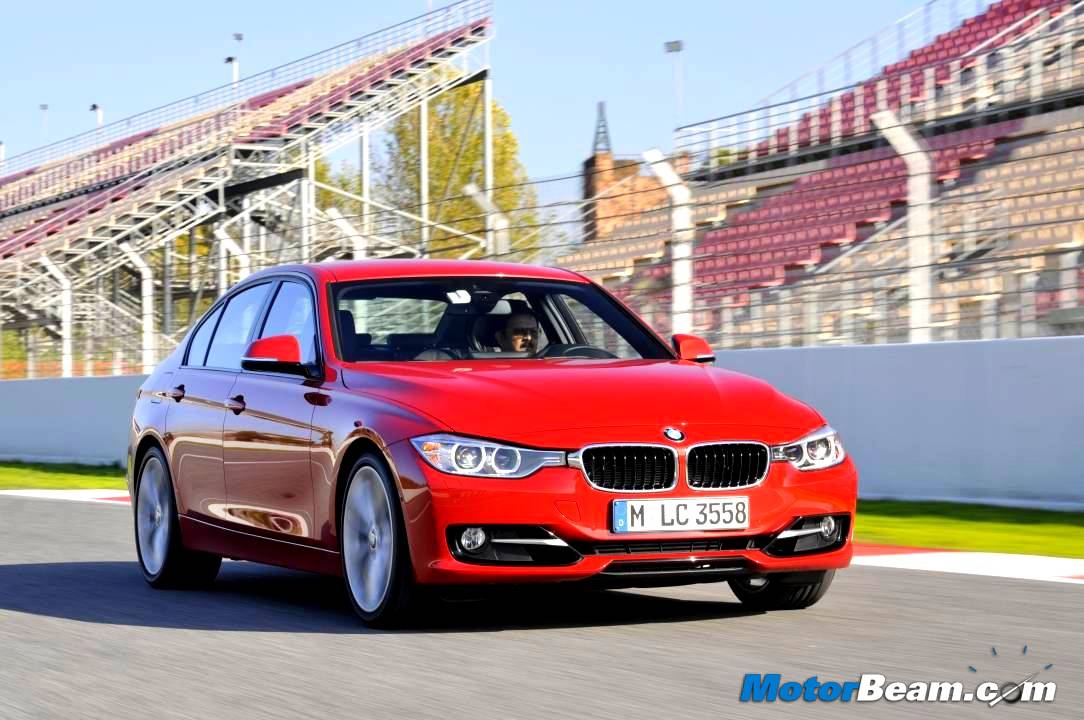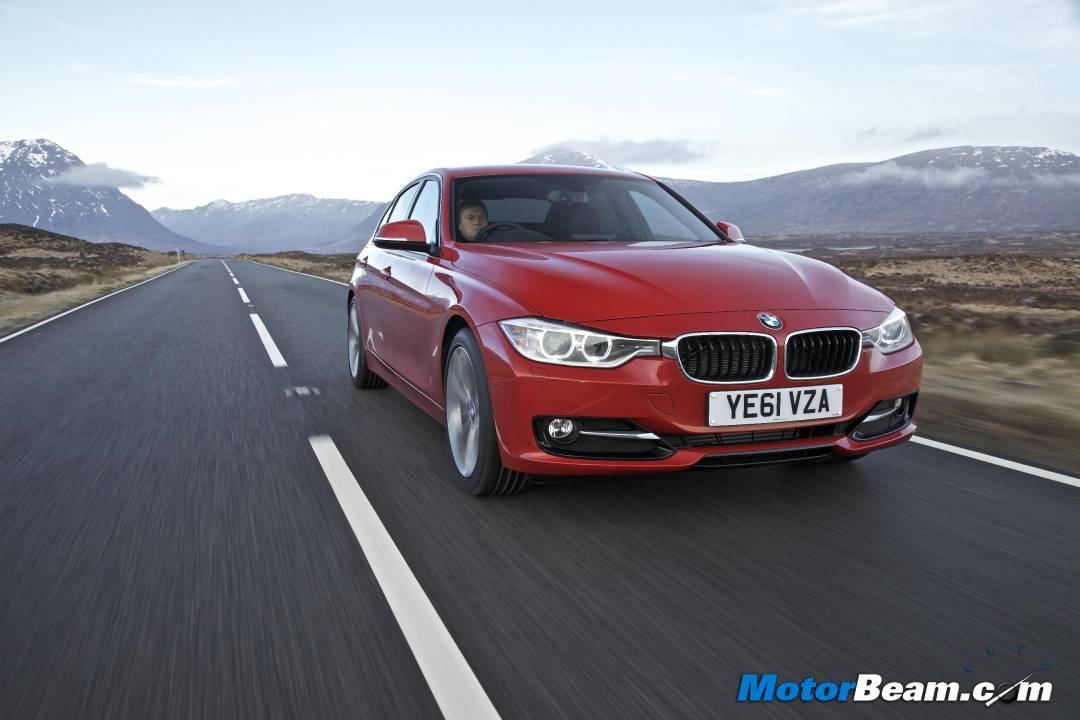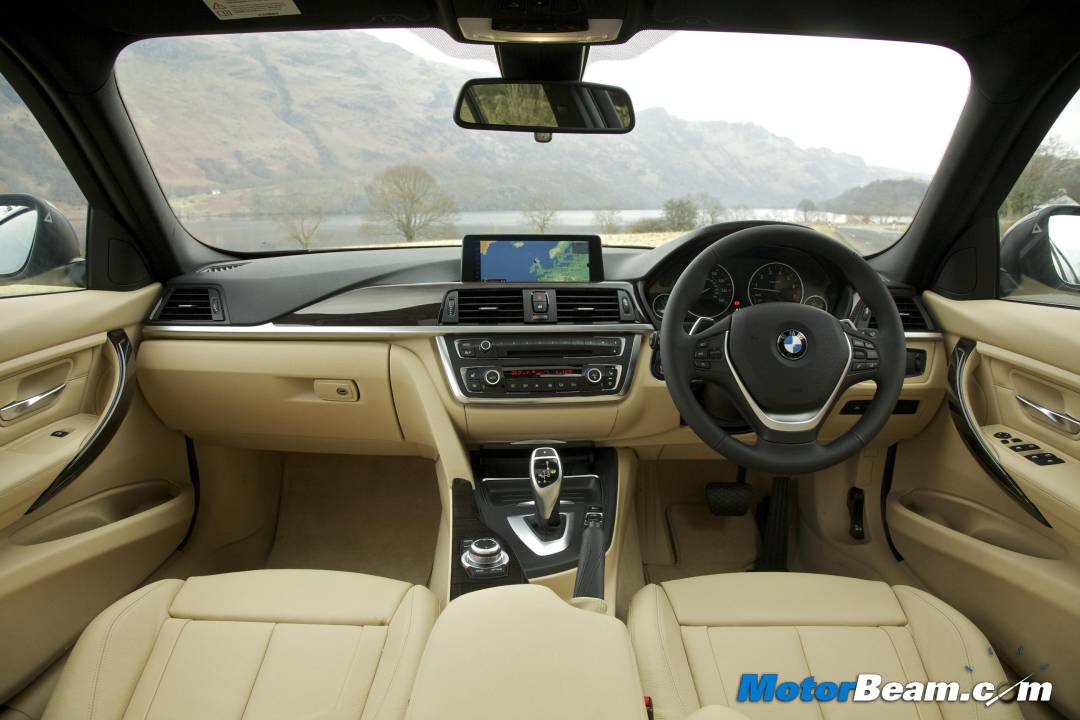Having pre-owned a BMW 3-Series several years ago in Dubai, the first question I had in mind when I first set sight on the F30, how good is this new arrival and what has BMW done to make it a worthy successor of the outgoing E90. It’s a natural reaction since most of us who have watched and felt the 3-Series close enough in the model’s several generations of existence are aware how this model almost single-handedly stirred a revolution in the segment with rear wheel drive architecture and a remarkable normally-aspirated straight-six 2.0-litre engine in the E30 of the early 80s right up to the outgoing E46.
For BMW, the 3-Series is its global volume seller and also the brand’s entry-level sedan ticket. The job for replacing the E46 is crucial as not only BMW needs to keep the model series at the top of its game in view of competition heating up in the segment. A two day fact finding mission in and around Barcelona, Spain including a half day track experience at the famous Cataluyna track thrown in as part of the test package. A couple of things I was keen to find out in view of the current trends in motoring business – downsizing displacement capacity and cylinders, introduction of direct injection and some form of turbo or supercharging and somewhere a barrage of cutting edge efficient technologies including transmissions and weight saving measures.
The new arrival is built on a new platform which is also shared with the next-gen 1 Series (F20). The new car has grown – now it runs on a longer wheelbase, wider track and is longer by two inches overall. For now, Coupes and Convertibles carry over unchanged in their current E90 form. There are a couple things in a 3-Series that nobody wants changed – the lovely steering feel, chassis dynamics and the way it handles from this sporty midsize luxury car. As for handling, the car certainly must live up to the ‘Ultimate Driving Machine’ tag and by far, we always considered the model series to represent the best car in its class. Besides a bit of anxiety, we were keen to find out how the changes and new packaging could have affected the new arrival for better or for worse?
Exteriors – At first glance, I would not hesitate to say that sheet metal is evolutionary, not revolutionary or anywhere near the controversial ex-BMW design chief Chris Bangle’s designs. On the contrary, I would rate Christopher Weil’s restyle touches as positive in the senses that the car retains predictable corporate design cues and connects well with the pre-Bangle era 3-Series models. For those who didn’t know, Christopher Weil is part of Adrian Von Hooydonk’s team and his new design language at BMW and he also designed the GT. From aesthetics, the idea of pushing the headlamp lens right into the grille is perhaps the most unusual aspect of the new 3-Series design and we think the car is much closer to the 5-Series in overall execution with its new dual character lines.
While the car is bigger and has more kit than before, it doesn’t mean that it’s heavier or clumsy. Weight savings have been possible due to selective use of higher strength steels in the body structure, a modded and lighter base engine, and increased use of plastics, composites, and aluminium in the chassis. An equivalently equipped 328i is 40kg lighter than its predecessor. The new platform’s suspension is effectively an update of the existing hardware. This means the car gets a forged aluminum five-link MacPherson strut set-up at the rear and aluminum-intensive double-joint struts up front.
Interiors – The cabin is typical of BMW and revised dimensions have been put to good use. For instance, the 1.9 inch wheelbase stretch which was used to add a half inch of legroom in both rows also helps lower the front seats enough to facilitate extra 1.8in for headroom up front while the rear heads enjoys 0.2 inches more clearance now. However, some of the same familiar tradeoffs of sport sedans return here in the new 3-Series, especially when it comes to occupant space.
The clinically clean instrument panel sits in the dashboard which has a unique to BMW feature — the revised placement of the navigation screen, which instead of being recessed, now sits on top of the dashboard with retractable mechanism. It’s a very thin glossy black tablet, rimmed in a simple chrome band. The instrument cluster also gets a uniform non-reflective matte black background that allows colour graphics, essential information and even cruise control settings to be posted between the main dials. Meanwhile, as before, there’s the latest iteration of iDrive completed with now-familiar combination of buttons and rotary controller remains on the center console, near the gear shifter. While it has been simplified in its operation, still the system seems unnecessarily complex, and we are not sure how it will appeal to the iPhone generation of consumers.
Powertrains – Under the bonnet, for almost 20 years as we are aware, 3-Series models have enjoyed inline-six engines. Although the 335i badged variants carries on with a single-turbo 3.0-litre six pumping out 300hp and 300lb-ft of torque, there’s a new engine that BMW is keen to promote. It’s the new forced-fed 2.0-litre four-cylinder in the 328i which offers 240hp at 5,000rpm and 260 lb-ft of torque at 4,000rpm. Both engines are mated to ZF eight-speed automatic transmissions.
Driving impressions – One of our concerns was that with all the new content, and the revised dimensions, that the 3-Series would be feeling more like a 5-Series. Our test cars were shod with 19in Bridgestone Potenza S001s — 225/40 (front) and 255/35 (rear). Meanwhile, aerodynamic efficiency is also improved from Cd 0.29 to Cd 0.23 now in the 328i. Our test car also had the optional variable-ratio electric-assist rack [which replaces the sublime hydraulic power steering assist that we have been so used to], and to which BMW claims that it provides a 14.5:1 ratio on-centre, quickening to 11.2:1 as the wheel passes about 100° in either direction.
The first day of the drive focused on day-to-day driving situations in and around Barcelona and we began the drive with the entry level turbo charged 2.0-litre. This engine uses direct injection, has a new faster-acting Valvetronic timing and lift, and twin-scroll turbo support to offer 10 more horses and 60 lb-ft of additional torque than in the old in-line six. On the move the changes are evident as most of the torque is delivered 1,500rpm earlier (when compared with the in-line six). This means from the onset itself the car’s powertrain is much more relaxed, thanks also in part to the sublime eight-speed transmission. On the issue of the switch from hydraulic assist to electric power steering, we are not entirely convinced of BMW’s logic to do it [although technical experts at Barcelona at length talked about its benefits] and unless one gets used to it, the passing away of the once legendary steering feel will be mourned by aficionados.
But the brighter side is that despite the new layout and architecture, BMW hasn’t compromised in maintaining an ideal 50:50 front:rear weight balance as before. While driving through the endless roundabouts and city traffic in Barcelona, we took the opportunity to toggle the Driving Dynamics Control switch to the new Eco Pro setting. Activating this optimizes all systems for maximum efficiency (including reducing power sent to heated seats and mirrors, lowering A/C output), and most of all remapping the throttle and shift on the fly to discourage rash or uneconomical driving. The display under the speedometer also provides driving hints, such as indicating when to reduce throttle input if you past 70 per cent or to slow down if you’re above 120km/h street legal limts. That’s not all, it also tells you when to upshift the manual or to take the automatic out of sport shift mode [during which the new auto start-stop system is disabled]. The display indicates the amount of driving range your frugality has earned.
Admittedly, it takes a while to get used to this new set-up. Given the car’s electronic options, we spent 95 per cent of the drive in the Sport or Sport+ settings and in the process pushed the 2.0-litre and enjoying the eight-speed automatic’s crisp upshifts and rev-matched paddle downshifts. The car also appears lighter to handle and is also a full second quicker than the outgoing 328i with a 0-100km/h sprint time under 5.5sec in the automatic. What is encouraging is the fact that as before, the electronics aren’t that intrusive [beside the friendly advisory role] enough to spoil what a typical 3-Series driver is used to. On track, we even got a better opportunity to get acquainted with the car and its steering in particular. Out on the track, the 3-Series feels lean, and its dynamic goodness is very much intact. On smooth dry track it transmits no nervousness to suggest subtle variation in the grip level of the road surface, perhaps one of the reasons why the ratio transition feels unnatural in the tightest corners. After spending more than half a day on track, we can safely conclude that the electric steering does indeed convey the driver when approaching the limits of adhesion and we noted that both in fast corners and the twisty public road, the F30 feels as nimble and agile as the E90. While it can attack a fast corner, supporting in the endeavour we think is its broader stance and 10 per cent more rigid structure and driver-friendly tighter suspension settings.
Conclusion – BMW has given the 3-Series its most radical set of changes in many years, and because we—and sport-sedan owners and enthusiasts in general are fully aware of where the 3-Series came from and now where it is heading. We also appreciate the fact that BMW Group has tried to incorporate as many efficient technologies and systems (in view of competition and in line with future demands, legislation, etc) while trying to remain faithful as much as possible to the original theme. Somewhere, in-between they have gone overboard and those bits come up as niggles which a driver familiar with the 3-Series will immediately spot.
Competitors – Mercedes-Benz C-Class, Audi A4, Volvo S60.







